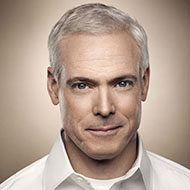
“Good is the enemy of great.” With this note of caution, author and researcher Jim Collins began an exploration at the Tuesday conference keynote session of why some leaders thrive in chaos and others don’t. The key to researching this statement, explained Collins, is to study the contrasts, not successes.
Leadership is not about personality. The X factor in great leadership is humility and passion. In the business world, CEOs have the power to make things happen. In local government, it is different. Leadership exists only when people follow by choice. Data show that there are three behaviors that distinguish successful leaders:
- Fanatic discipline
- Empirical creativity
- Productive paranoia.
Fanatic Discipline
The signature of mediocrity is inconsistency. In a true culture of discipline, disciplined thought leads to disciplined action. Collins uses a “20 miles a day” analogy. Set a goal that will be maintained regardless of the circumstances. The historic success of Southwest Airlines can be attributed to the goal of being profitable every year. The discipline does not change with conditions. Even in times of great achievement, great leaders do not overextend and leave themselves vulnerable.
What is your 20-mile march? What is it that you will achieve and measure every year? What do you need to do to ensure that your community never misses that measure? By putting in place a “20-mile march,” that will continue after you leave, managers can provide a gift to the community. The key is commitment to the march—consistency.
Empirical Creativity
How do great leaders innovate differently? The key is “empirical.” Great leaders obtain empirical evidence for what works. Creativity is a human trait; discipline is not. Creativity and discipline must be blended together. Discipline must be used to enhance creativity.
Productive Paranoia
Successful leaders are always worried. They understand that the only mistakes you learn from are the ones you survive. Productive paranoia means that you have the resources and buffers that you need to survive uncertainly and chaos. Shock, disruption, and volatility are the historical norm. The stability and prosperity that the U.S. has experienced during the 20th century are not typical. Local government leaders need to use evidence of what works and develop the discipline to survive instability.
What about Luck?
As Collins describes it, “luck does not happen.” Successful leaders are not luckier. They are able to seize the good luck and make the most of it and learn from the bad luck and make the most of it.
Great by Choice
Great leaders must incorporate all three behaviors: fanatic discipline, empirical creativity, and productive paranoia. Great leaders hold tight to core principles and stimulate progress. We don’t give up our values; we change our practices. Practices need to evolve in order to stimulate progress. Collins describes greatness as a matter of conscious choice and discipline, not a matter of circumstance.
To know great results, ask yourself these questions:
- Would your organization be missed if it were gone?
- Can your organization be great without you?
Great leaders spend time answering the question, “How can I be useful?” Local government professionals spend time answering that question every day.
Jim’s Twelve Questions for Leadership Teams
©Jim Collins
1. Do we want to build a great company, and are we willing to do what it takes?
- Reading: Great by Choice, Chapter 2, Built to Last: Chapter 2
2. Do we have the right people on the bus and in the key seats?
- Reading: Good to Great, Chapter 3
3. What are the brutal facts?
- Reading: Good to Great, Chapter 4
4. What is our hedgehog: What can we be the best at, with an economic engine, and for which we have unbounded passion?
- Reading : Good to Great: Chapter 5
5. What is our 20 Mile March, and are we hitting it?
- Reading: Great by Choice: Chapter 3, Good to Great: Chapter 8
6. Where should we place our big bets, based on empirical validation (bullets-to-cannonballs)?
- Reading: Great by Choice, Chapter 4
7. What are the core values and core purpose on which we want to build this enterprise for 100 years?
- Reading: Built to Last: Chapters 4, 11
8. What is our 15 to 25 year BHAG?
- Reading: Built to Last: Chapter 5, Good to Great: Chapter 9
9. What could kill us, and how can we protect our flanks (productive paranoia)?
- Reading: Great by Choice: Chapter 5, How the Mighty Fall
10. What should we stop doing to increase our discipline and focus?
- Reading: Good to Great: Chapter 6, Great by Choice: Chapter 6
11. How can we increase our Return on Luck (ROL)?
- Reading: Great by Choice: Chapter 7
12. Are we becoming a Level 5 Leadership team and cultivating a Level 5 management culture?
- Reading: Good to Great: Chapter 2, Great by Choice: Epilogue
These questions can be discussed, one per month, to fill out an entire year of disciplined thought. The most powerful results will come from repeating the cycle, rigorously hitting each question at least once a year.
Watch Jim Collins' interview with ICMAtv.
Watch Jim Collins' 2006 interview with ICMA Executive Director Bob O'Neill at icma.org/leadingideas, at the bottom of the page.
ICMA thanks our Strategic Partner Cigna for its sponsorship of this keynote address.
New, Reduced Membership Dues
A new, reduced dues rate is available for CAOs/ACAOs, along with additional discounts for those in smaller communities, has been implemented. Learn more and be sure to join or renew today!
